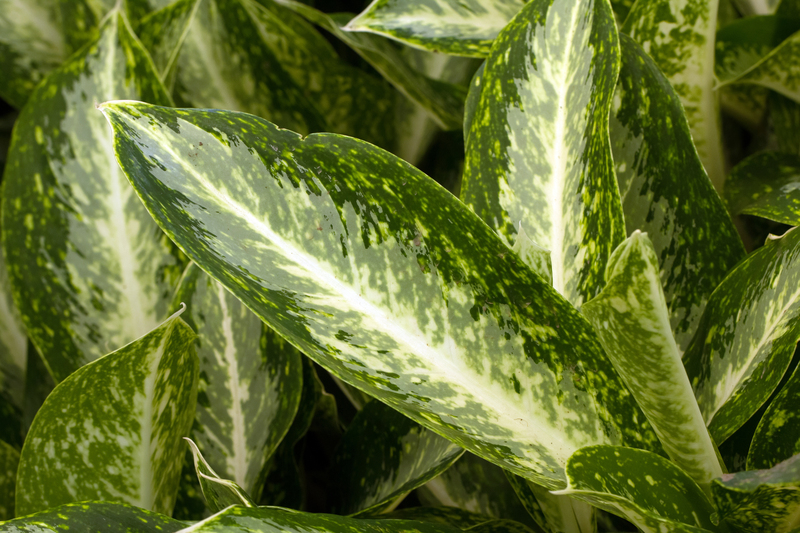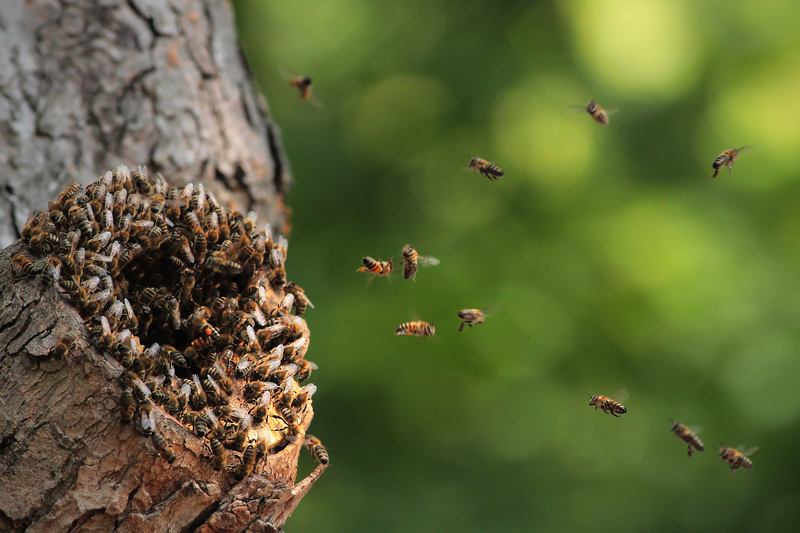Winter Care: How to Shield Your Garden Plants
Posted on 26/08/2025
Winter Care: How to Shield Your Garden Plants
As the crisp chill of winter begins to bite, every garden enthusiast knows that protecting precious plants becomes a top priority. Frigid temperatures, harsh winds, and frost can wreak havoc on tender and even hardy vegetation. Ensuring the survival and vitality of your green oasis means practicing winter care for garden plants with diligence and expertise. In this comprehensive guide, we'll explore everything you need to know to shield your garden plants in winter, from protective techniques to specialized tips for various plant types.
Understanding the Challenges of Winter on Plants
Winter brings more than cold air--a suite of conditions can threaten your garden's health. Here's what you need to guard against:
- Freezing temperatures damage plant tissues, especially in sudden frosts.
- Wind chill increases moisture loss and physical stress.
- Fluctuating temperatures confuse plant dormancy, causing premature growth or dieback.
- Ice and snow accumulation can break branches and suffocate roots.
- Reduced sunlight slows photosynthesis, leading to weaker plants.

Preparing Your Garden for the Winter Months
1. Assess Plant Vulnerability
Identify which plants are most susceptible to winter damage. Generally, tropical and subtropical species, young saplings, and even some evergreens require extra protection. Take note of perennials that have bloomed late or are still establishing roots.
2. Clean and Clear the Garden
Remove fallen leaves, diseased branches, and spent annuals. A tidy garden prevents pests and fungal diseases from overwintering and attacking new growth in spring.
3. Apply Mulch Generously
Spread a thick layer of mulch around trees, shrubs, and tender perennials. Mulch regulates soil temperature, retains moisture, and prevents heaving caused by freeze-thaw cycles. The best materials for mulching include:
- Bark chips
- Straw
- Pine needles
- Shredded leaves
- Compost (for added nutrients)
Tip: Keep mulch a few inches away from stems and trunks to prevent rot.
Essential Winter Protection Techniques for Garden Plants
How do you actually shield your garden plants from winter? Here are proven methods to help your outdoor beauties survive the coldest months.
1. Plant Covers and Blankets
- Frost cloths, hessian/burlap, or old sheets protect from sudden frost. Drape these over sensitive plants overnight and remove them during the day if sunlight is available.
- Use commercial plant protectors or "frost jackets" for easy, reusable coverage.
- Mini greenhouses and cold frames give delicate plants the best shield against extreme cold.
Remember: Secure coverings with pegs or weights so that winter winds don't blow them away.
2. Cloches and Protective Domes
Cloches, made from plastic, glass, or even cut-off milk jugs, can be placed over individual plants to create a warmer microclimate. This technique is particularly effective for young vegetable seedlings and annuals.
3. Building Windbreaks
Wind can dry out and chill plants excessively. Construct simple windbreaks using:
- Garden fencing with burlap stapled to it
- Plywood sheets staked into the ground
- Temporary hedges of evergreens
Uninterrupted exposure to cold winds makes it harder for winter garden protection to work--ensure these barriers are on the windward side of vulnerable beds.
4. Watering Wisely
While overwatering is a menace, thirsty roots are more prone to freezing damage. Water your garden thoroughly before the ground freezes--moist soil holds heat better than dry. Avoid watering during frost periods to prevent damaging ice formation.
5. Pruning and Deadheading
Prune dead or diseased wood in fall, but avoid heavy pruning on flowering shrubs as this could remove next season's buds. Remove spent blooms and seed heads to minimize pest and disease loads.
6. Wrapping Trunks and Stems
Young trees and tender shrubs can suffer from frost cracks and sunscald. Use tree wrap or spiral guards to protect trunks, especially on fruit trees and newly planted ornamentals.
Special Winter Care for Different Types of Garden Plants
Each plant type has unique needs when it comes to winter care and plant protection. Here's how to give tailored care:
Perennials
- Cut back foliage after it dies down naturally to reduce hiding spots for pests.
- Lightly cover the crowns with mulch, but avoid smothering.
- For tender perennials, dig up tubers (like dahlias and cannas) and overwinter indoors in a cool, dark spot.
Evergreens
- Evergreens lose water through needles or leaves all winter. Water deeply before ground freezes, and use anti-desiccant sprays if your climate is windy and dry.
- Shield from heavy snow and ice with tented covers or by brushing off accumulation gently.
Roses
- 'Hill up' soil or mulch around the base, covering the graft union by 8-12 inches.
- For hybrid teas and delicate varieties, use rose collars filled with dry leaves or straw.
- Do not prune heavily before winter; this increases vulnerability to cold.
Vegetable Gardens
- Use cloches, cold frames, or row covers to extend harvest for hardy greens and root crops.
- After harvest, turn the soil and apply mulch or plant cover crops to protect and rejuvenate soil structure.
Container Plants
- Move containers to sheltered locations, such as near walls or into garages/sheds if possible.
- Wrap pots with bubble wrap, burlap, or even newspapers to insulate roots.
- Elevate pots off frozen ground to prevent waterlogging.
Winter Plant Care for Indoor Gardens
Even indoor plants need extra attention during winter:
- Place in bright locations but avoid drafting windows and direct heat.
- Reduce watering, as most houseplants grow more slowly in lower light.
- Monitor humidity--heaters dry out the air, so mist regularly or use a pebble tray.
- Check for pests which may take advantage of stressed plants.
Common Winter Care Mistakes & How to Avoid Them
Learning from experience is helpful, but here are some frequent winter care mistakes to help you avoid common pitfalls:
- Leaving covers on all winter: This can smother plants and encourage mold. Remove on warmer days.
- Using plastic directly on plants: Always provide an air gap to prevent condensation damage and freezing.
- Over-mulching: Deep mulch suffocates root crowns; use only what's necessary.
- Forgetting to water before freeze-up: Dry plants are far less resilient.
- Ignoring late-season weather shifts: Sudden warm spells can break dormancy. Be prepared to re-cover vulnerable plants.
Benefits of Proper Winter Plant Care
Shielding your garden plants each winter brings invaluable rewards:
- Higher survival rates for tender and marginal plants.
- Healthier, more robust growth in spring and summer.
- Reduced disease and pest problems from a sanitary offseason.
- Prolonged beauty and productivity for both ornamentals and edible crops.

Frequently Asked Questions about Winter Garden Plant Protection
- When should I start protecting my plants for winter?
- Start in late autumn when temperatures consistently dip toward freezing at night.
- How can I tell if my plant needs extra winter care?
- If it's labeled "tender," "half-hardy," or not suited to your zone, protect it.
- Young, freshly planted, or late-blooming plants typically need more attention.
- What's the best mulch for winter?
- Straw, bark, shredded leaves, or compost all work. Straw provides great insulation without compacting.
- Can I use salt to melt snow near my garden beds?
- Avoid salt as it harms soil and plant roots. Use sand or sawdust for walkways instead.
Conclusion: Give Your Garden Plants the Best Winter Protection
With proper techniques and a little preparedness, winter care for your garden plants becomes a routine that pays off with vibrant blooms and healthy harvests year after year. Monitor each plant's needs, apply protective measures early, and look forward to a flourishing garden as soon as winter thaws.
Have any favorite tips or stories about shielding garden plants from winter? Don't hesitate to share your experiences and help others nurture more resilient gardens all season long!

